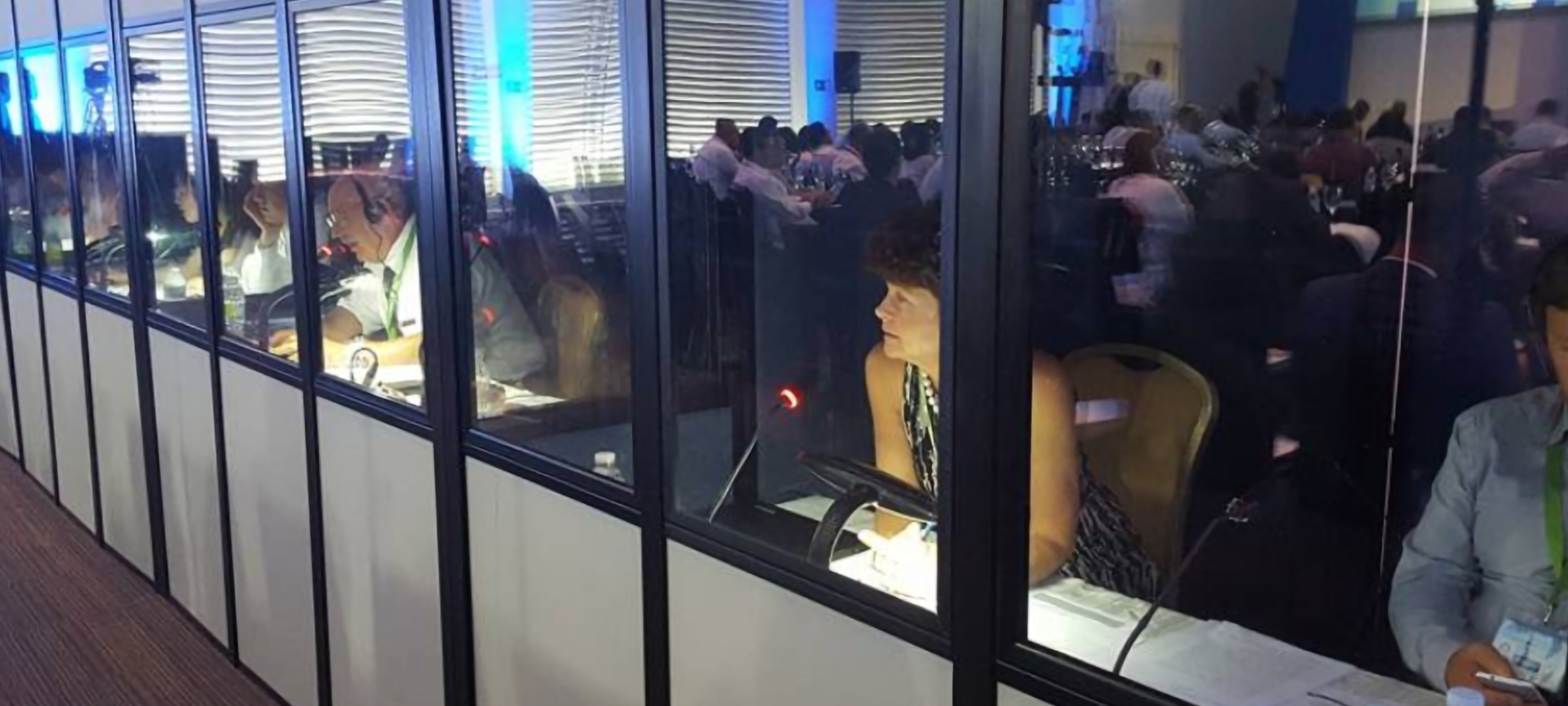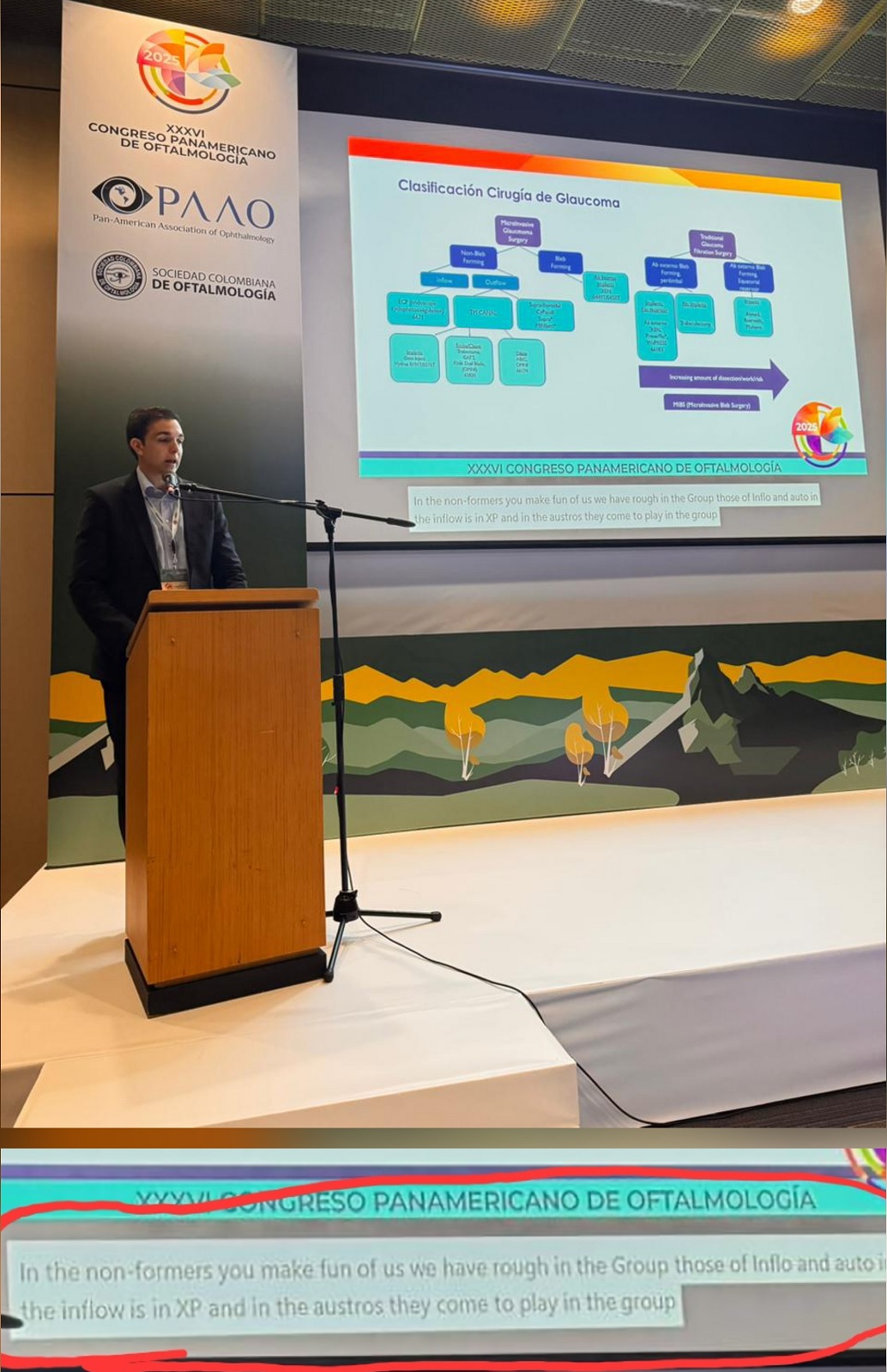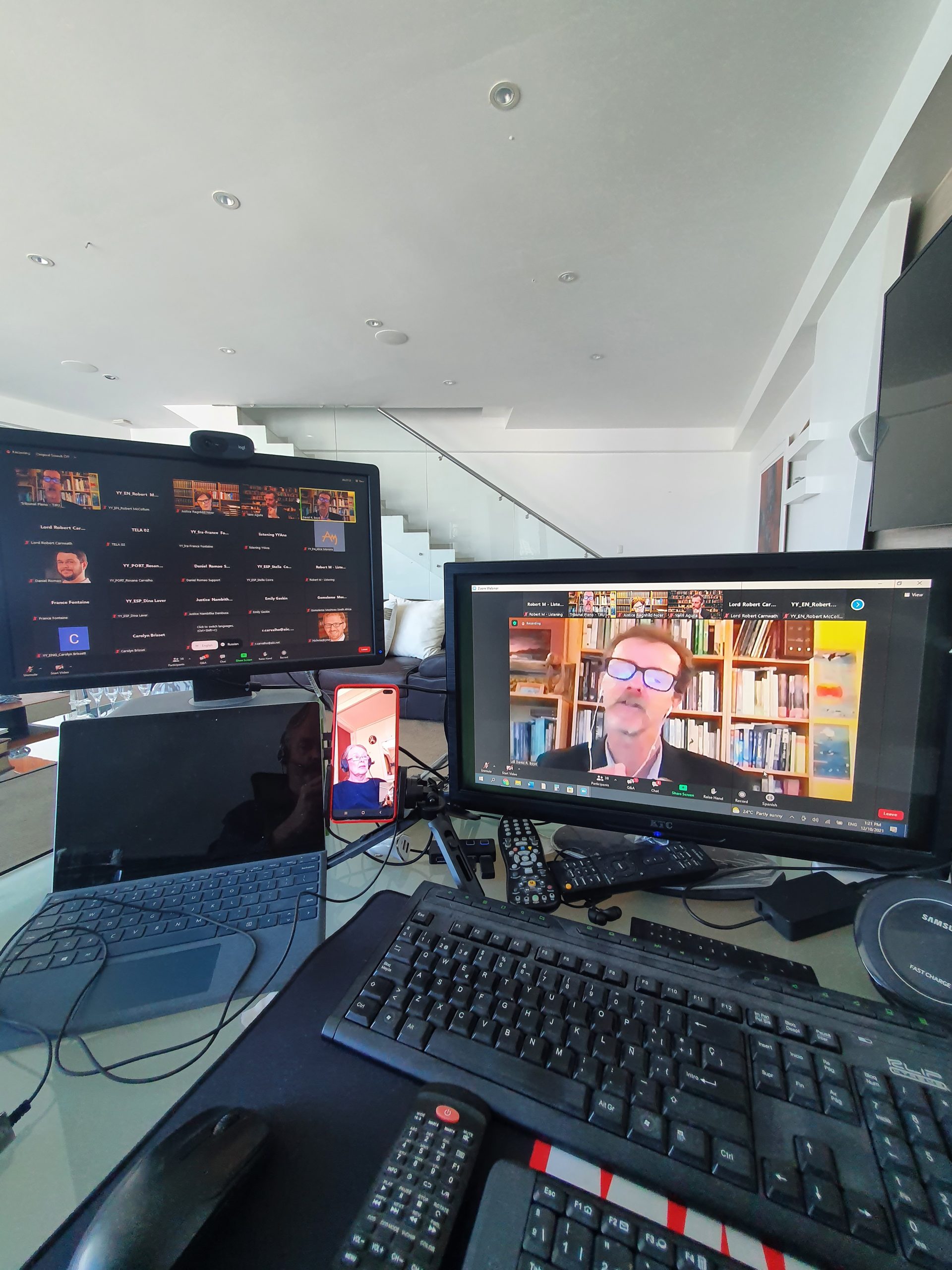In the Simultaneous Conference Interpretation Profession, a clear preference has always existed in favor of On-Site work versus remote interpretation. Since the profession was first formalized in Nuremberg, evidence shows that interpreters loose cognitive capacity to perform other tasks while listening from a source language, interpreting into a target language, putting that interpretation into spoken words into another culture and language without losing context, while still listening to speakers over their own voice. To enhance elegance in delivery and help with the toll taken on the human brain from such deep constant levels of concentration, simultaneous interpretation standards have been developed and improved over decades. These include working conditions such as work shift duration, lighting, workplace oxygen levels, sound volume and quality with no interruptions, isolation inside a professional booth, the possibility to be in the conference room with visual access to speakers and their body language.
Remote Simultaneous Interpretation (RSI) is a mode of Simultaneous interpretation whereby the interpreter is in a location other than the speakers and audience. It has existed since the early 70s upon the arrival of non-English speaking migrants to Australia, and in the United States with the creation of a Law Enforcement remote interpretation taskforce that would resolve language barriers in distant police headquarters. Many other organizations and companies have since then developed platforms claiming remote simultaneous interpretation capabilities; however, because of all the circumstances explained above at the beginning of this article, RSI technology was never good and reliable enough to guarantee simultaneous conference interpretation for large worldwide venues, meetings, negotiations and conventions where effective communication is crucial and any possibility of poor language interpretation is not an option.
Main disadvantages of Remote Simultaneous:
- Lack of concentration and motivation of interpreters who do not feel in an adequate environment for interpretation.
- Tension and anxiety generated by technical problems without a technician present to assist interpreters.
- Por sound quality and volume with possible interruptions if bandwidth, installations, devices and software are not of professional quality.
- Lack of contact with booth mate which interpreters have partially resolved by using back channels (video conferencing in a separate platform in a second or third device between boothmates, i.e.: WhatsApp video call).
- The possibility of losing internet connection and leaving the conference stranded without communication. Especially important for seasoned interpreters with an international reputation to protect.
- With remote interpretation there is always the risk of a technical problem stopping the conference or meeting after hundreds of thousands have been spent to put it all together, such as unreliable internet connection, virtual platform is not designed for interpreters, lack of verbal contact with technicians and organizers for problem solving, incapacity to perform consecutive interpretation if the system fails, lack of isolation by speakers further reducing sound quality, etc.
Before the COVID-19 pandemic, professional, seasoned, interpreters with an international status and reputation, would even refer to interpreters who accepted remote work as “lower forms of life”.
But then came COVID-19, the Pandemic, and the shutting down of the conference, conventions, and incentives industry worldwide. People had to meet all over the world and virtual meeting platforms were overwhelmed by the demand. The most popular ones like Zoom, Webex, Teems, Meets, did not have simultaneous interpretation capabilities. New market entrants took advantage and further developed virtual meeting platforms specifically designed for interpreters (i.e.: Interprefy, Kudo, Interactio, Voicebox, etc.).
Given the increased demand, some of these platforms rendered services at such ridiculously high prices that counterbalanced the benefits of not transporting and lodging interpreters, equipment and technicians to a distant conference venue. Savings became the main reason for using RSI once the industry started to open again. Overpricing therefore allowed traditional virtual platforms like Zoom, Webex, and Google Meets to develop their own remote simultaneous interpretation enabling technologies and recover their lost market share.
Today, because of the pandemic and the millions invested in improving technology, it is safe to state that Remote Simultaneous Interpretation, when coordinated by seasoned interpreters who have embraced technology, knowledgeable virtual platform technicians, and experienced Digital Event Organizers, is just as reliable as On-Site Simultaneous Interpretation. With the added perk that organizers may save millions in airfare, hotel accommodations, subsistence fees, equipment rental and transportation, technician fees, etc.
If you have any questions about organizing remote simultaneous interpreter teams, accessing virtual platform services, organizing digital events and meetings, anywhere, anytime, in any language, please write [email protected] and we will be more than happy to advise free of charge. You may also write to WhatsApp +1-829-750-0267.




